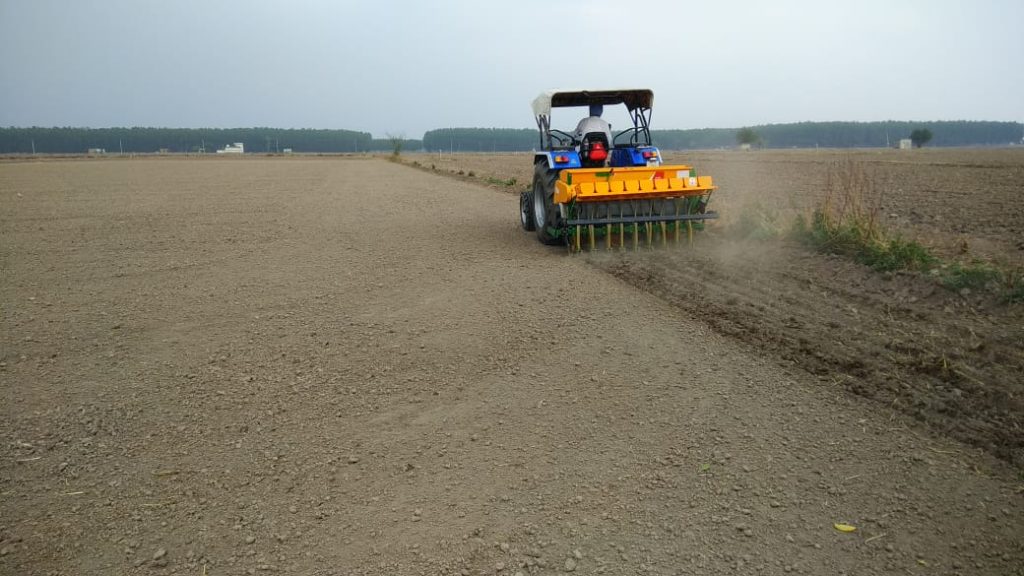
Rice was seeded directly in about one-fifth of total area under rice in Punjab in 2020.
DSR saves about 15-20% irrigation water and offers about 10-15% higher ground water recharge than puddled transplanted rice (PTR).
Wheat grain yield, after DSR, is 100 kg per acre higher than after PTR.
A novel method of direct seeding called ‘tar-wattar DSR’ was recommended and successfully adopted at a large scale in 2020 in Punjab.
- In ‘tar-wattar DSR’, a major departure from the earlier practice is delayed first irrigation which is applied at about 21 days after sowing which has many added advantages:
- More saving in irrigation water as evaporation loss is minimal from a drier surface.
- Lesser weed emergence.
- Reduced incidence of nutrient deficiency especially iron owing to deeper root development and lesser leaching of nutrients.
- Wider adaptability
- Rice yields are comparable with puddled transplanted rice (PTR). If in any case, yield is a bit lower, the profits are no lesser than PTR.
Please consult agriculture experts before planting paddy through the DSR method.
Click below to download information on the DSR method.
Direct Seeded Rice-Important tips and Suggestions
ਝੋਨੇ ਦੀ ਸਿੱਧੀ ਬਿਜਾਈ-Updated
DSR-Leaflet_Hindi

DSR – direct sowing of Paddy can really save big on water and labor costs. Hope the DSR is adopted by more farmers and it gets successful transition. A win win situation for both farmers and environment.